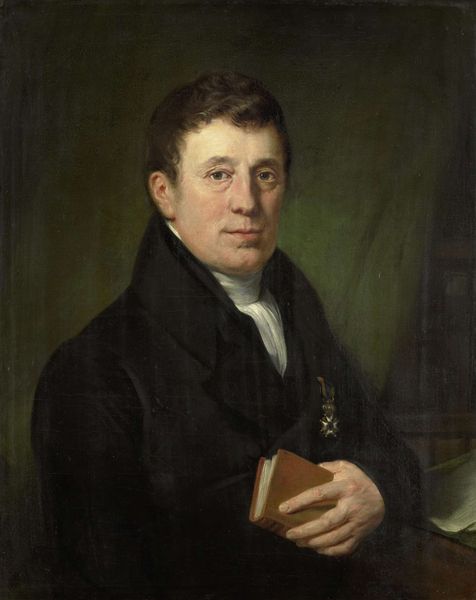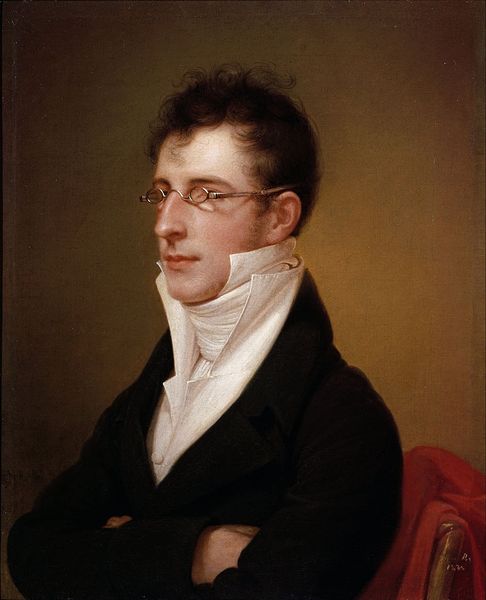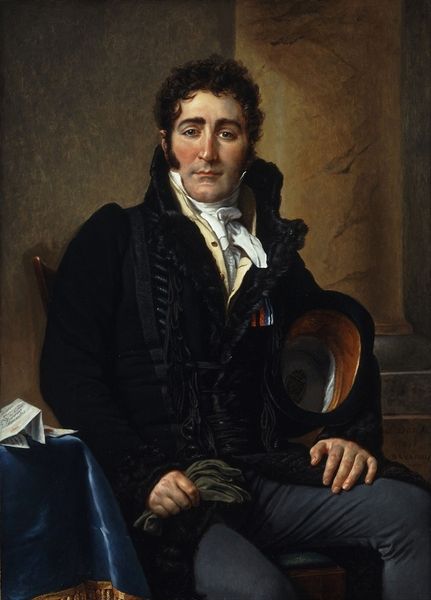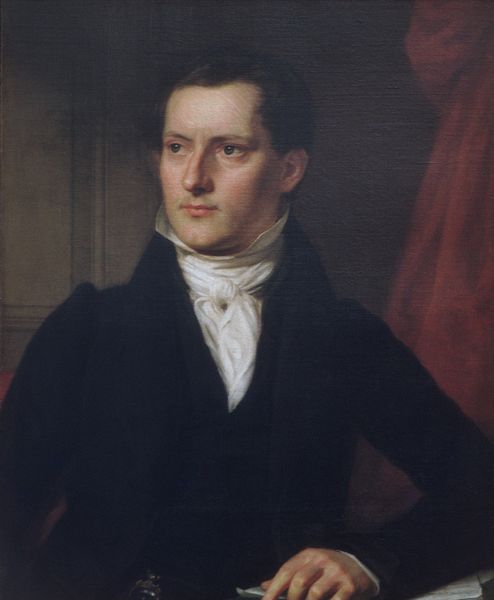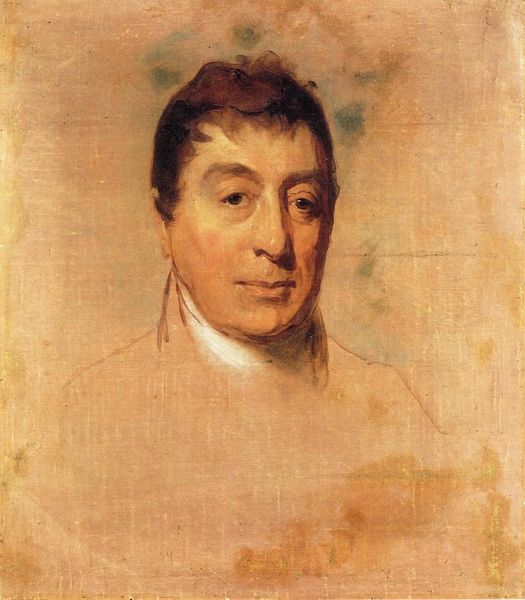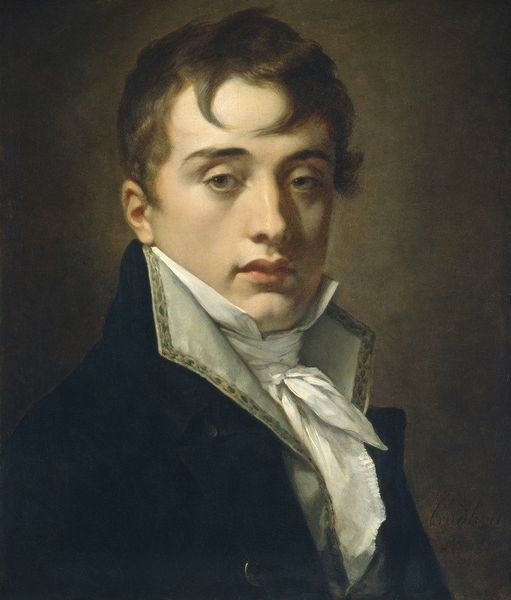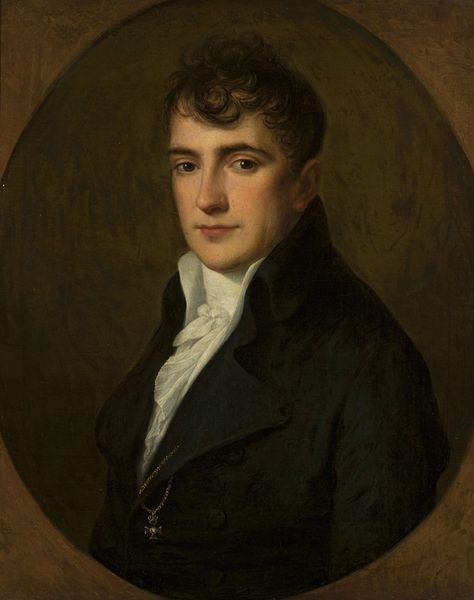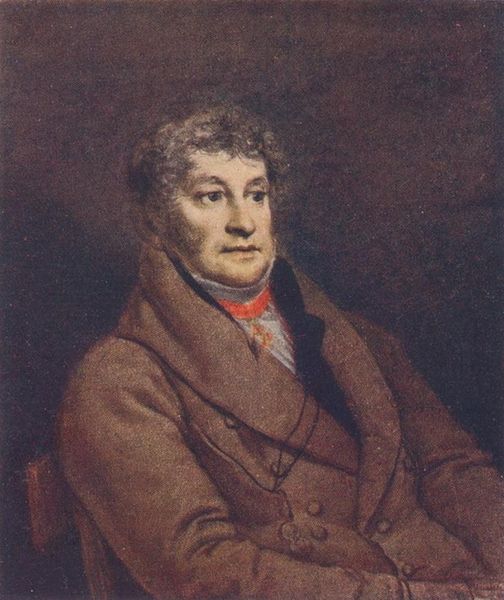
painting, oil-paint
#
portrait
#
portrait
#
painting
#
oil-paint
#
figuration
#
romanticism
#
academic-art
Copyright: Public domain
Curator: This painting is a portrait of Tommaso Gargallo, a Sicilian poet and scholar. It was created by Vincenzo Camuccini and exemplifies the academic style. Editor: It strikes me as very subdued in its palette. Mostly cool blues and grays, softened by the pink of his cheeks. It's a tightly framed composition. Curator: Camuccini was known for his classicizing style, drawing heavily from ancient Roman art. You see that echoed in the idealized portrayal here, moving away from the Baroque dynamism of earlier periods toward a more restrained presentation. The emphasis on form and clarity of line aligns with the neo-classical movement's principles embraced in academic circles. Editor: Absolutely, the focus isn't on bravura brushwork, but on representing the sitter. You notice how the layers of paint have been applied, smooth on top of the other to create the likeness of a polished gentleman. The materiality almost disappears in service of the subject. It’s interesting that the very tangible medium of oil paint is employed to immortalize such an "intellectual". What sort of societal position would the sitter be considered to inhabit at the time? Curator: As a scholar and poet, Gargallo held an esteemed position in Sicilian society, connected to the burgeoning intellectual circles that began to solidify across Europe. Camuccini's choice to paint him in this rather unadorned manner—simple clothing, neutral background—suggests an emphasis on Gargallo’s intellect, aligning with the era’s fascination with reason and learning and academic portraiture conventions. It subtly signals that he should be revered, not for wealth or status symbols, but rather for his contributions to literature and intellectualism. The painting itself solidifies him among the scholars and important figures of history through the very act of its creation and inclusion into such institutions. Editor: I find that the emphasis on his status, through his physical likeness, clashes a bit with the implied pursuit of intellectualism, which perhaps speaks to an element of romanticising this pursuit among the upper class. In our time, this contrast would create different expectations. Curator: That's a crucial point! There’s tension. The image reinforces class structures even as it seemingly celebrates intellect. Camuccini uses established modes of representing power—portraiture itself—to convey a new, subtly different message about the kind of man worthy of admiration. Editor: Well, seeing it laid out like that does make you consider its role within the structure of image creation as a material production. It also emphasizes just how carefully curated the material presentation must be. Thank you for your insight. Curator: Thank you as well, thinking about the piece in this way illuminates much about academic settings of portraiture as cultural institutions and those whom they hold as central to history and their own status.
Comments
No comments
Be the first to comment and join the conversation on the ultimate creative platform.

